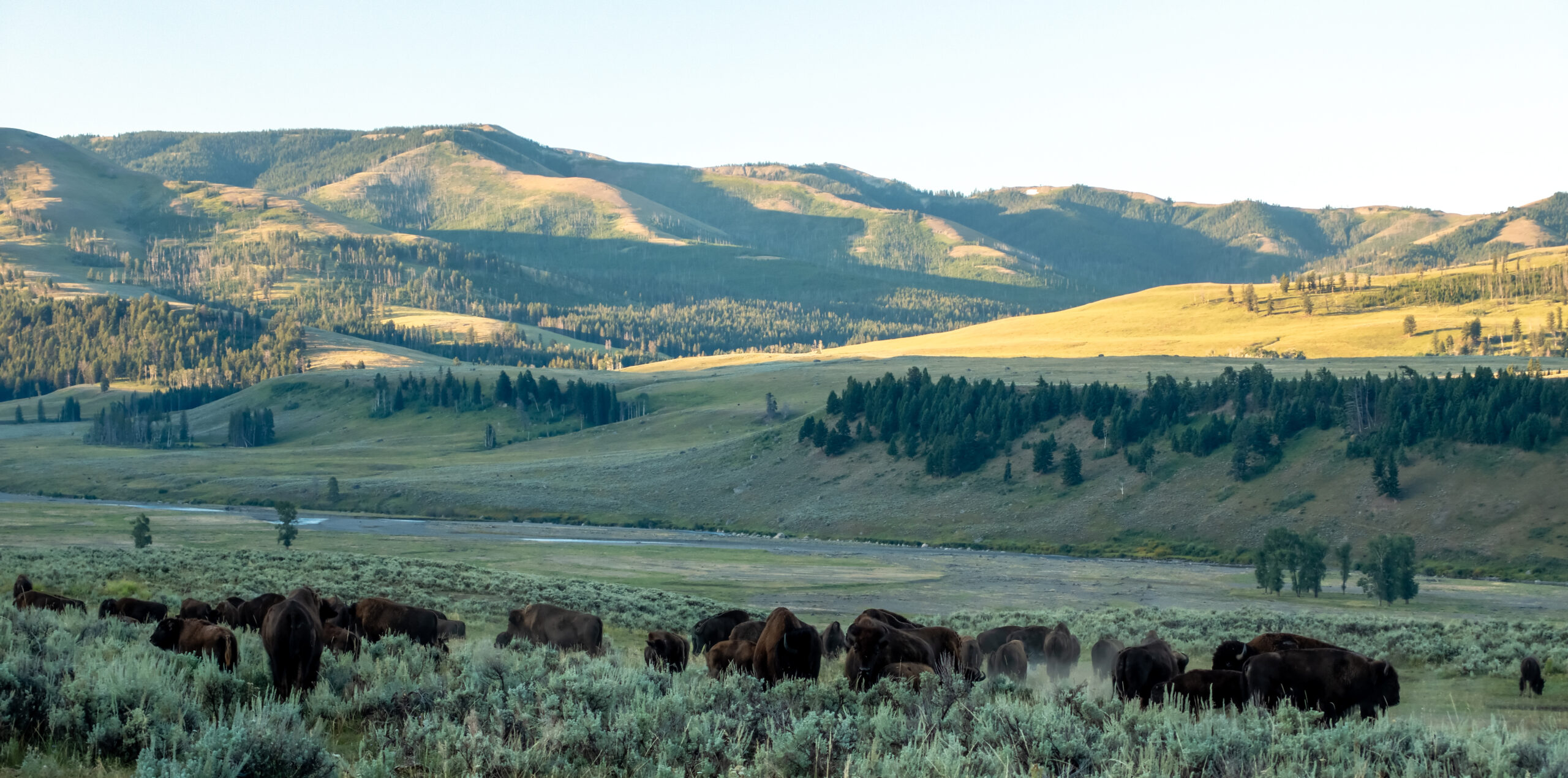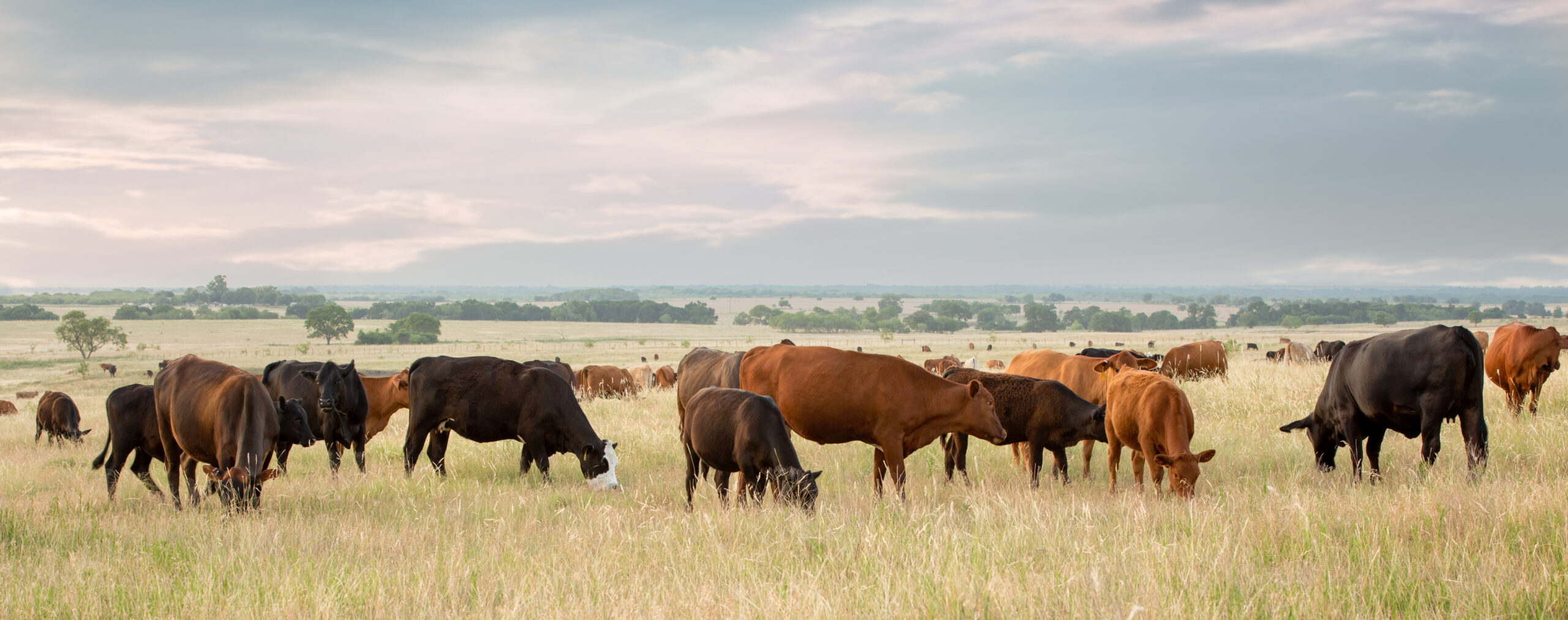
The Relationship between Cattle, Sustainability, and Ecosystem Function
Cows and Climate
We have all seen the news: Agriculture contributes 8% – 10% of US annual greenhouse gas emissions, and production of beef cattle contributes 3% (USDA, 2021)(Waite et al, 2021). Further, the natural rumination process releases methane, which is a much more potent greenhouse gas than carbon dioxide and is of greater environmental concern. The thesis is that people should eat less beef, and the world should have fewer cows. In the climate change arena, many believe that fewer cows equal a better climate. Fewer cows mean many of our problems would be solved.
If only it were that simple.
Why ruminants?
Cattle are ruminants. And lots of other animals are too, like elk, bison, and deer in the American West. This means they have a four-chambered stomach capable of digesting forages like grasses and shrubs. These forages tend to be highly lignified in the dormant season, and one of the real advantages of ruminants is that they can digest this tough forage efficiently. When the grass turns brown at the end of the lush green growing season, ruminants thrive on those dormant grasses and shrubs. Other animals, such as elephants, horses, and even humans, lack the specialized digestive systems that ruminants have, making them less efficient at processing lignified forage.
When ruminants swallow forage, their stomach processes it, and the lignified forage is regurgitated through rumination, commonly known as chewing the cud. This regurgitation process is when methane is released into the atmosphere through burping. A common misconception is that cattle flatulence is the primary source of methane emissions, but it is the process of burping during rumination that releases methane into the atmosphere. Once the forage is rechewed and swallowed, the digestive system can then more readily utilize the nutrients in the forage. Overall, rumen offers a highly efficient means of digesting forage, which is why so many animals worldwide evolved with rumen.
Most of the world’s forage is consumed by ruminants1. Consider the large caribou herds in Canada, Russia, and Scandinavia; wildebeest, elands, and springbok in Africa; goats and sheep in Europe and the Middle East; and the once massive herds of bison in North America. Were it not for ruminants, much standing growth of grass, forbs, and shrubs would go unconsumed and would be susceptible to wildfire, another potent greenhouse gas emitter. Humans rely on ruminant animals as a major source of protein in our diets.
Kick the Cows Out?
The common argument is that if we kick the cows out, then the environment will improve, and we will have less to worry about. The logic is that fewer cows mean more plants will grow, and we will therefore have fewer enteric methane emissions and more photosynthetic activity.
Past conservation efforts reveal why these arguments are never that simple. Consider the Wall Creek Game Range, lying in one of Montana’s most wildlife-abundant valleys, the Madison. With the beautiful Madison River bisecting the valley, open grasslands and rolling hills provide year-round forage for thousands of elk. To make even more forage for elk, Montana’s state wildlife agency, Fish Wildlife & Parks (FWP) purchased a ranch on Wall Creek in 1960, removed all cattle that the previous owner grazed, and created a wildlife refuge dedicated to elk habitat. It seemed like a great idea.
But the unexpected happened: the elk stopped using their refuge. FWP observed them on neighboring cattle ranches, but they stopped using Wall Creek. Befuddled, FWP even tried enticing elk back by fertilizing the plants and even hazing elk back onto the game range. But nothing worked.
The reason for this is senescence. Forage plants preferred by elk contained several years’ worth of old growth, making them unappealing. It is akin to humans finding a few days old, unappetizing salad at a restaurant salad bar. Consequently, the elk moved away from the senescing forage and onto neighboring cattle ranches with fresh forage.
In 1981, FWP moved against common wisdom and put cattle back on Wall Creek. But this time, they pursued more aggressive management practices, moving cattle through a more planned rotation, which shortened grazing durations and lengthened plant recovery periods between grazings. They utilized cattle as tools to help freshen the forage for elk. Elk returned in large numbers once the forage was rejuvenated (Alt, Frisina, & King, 1992) (Shamart, King, & Profitt, 2012).
Since this significant shift and subsequent success, FWP has collaborated with the US Forest Service and neighboring ranches to monitor improvements in land health and riparian conditions, sharing their data and knowledge with the larger wildlife and conservation community. This learning opportunity from the conservation arena has strong implications for the climate change arena as well.
Don’t Eat Meat?
Given methane emissions from ruminants, should we all become vegetarians? If our goal is to truly reduce greenhouse gas emissions, is eating less meat the solution? Hardly. Consumption of animal- based proteins has been a staple of human populations for centuries. As people have moved out of poverty and into the middle class, they tend to consume more meat (Baldwin et al., 2016). And meat consumption has been increasing globally in recent years, and it is projected to continue increasing dramatically over the next few years (OECD, 2021).
If large numbers of people stopped eating beef, it would place much more pressure on alternative food sources, each of which comes with its own production challenges. Industrial production of corn, for example, caused the loss of roughly one third of the Corn Belt’s topsoil, (Dzomback, 2021). Concurrently, many of the chemicals associated with industrial corn production flow into the Mississippi River and find their way to the Gulf of Mexico, creating a massive dead zone (Barnhart, 2016). Further, maintaining the soil’s fertility requires increasing amounts of fertilizer and herbicide, thus increasing use of hydrocarbons (Kimbrough, 2022). Each of these has strong climate and conservation related concerns.
This shift could introduce additional problems. Almonds, for example, which are often cited as an alternative protein source to beef, require enormous amounts of water for their production. (3.2 gallons of water for each almond raised) (Fulton et al., 2019). The production of cotton, soybeans and potatoes is also known for being harmful to the environment. The production of palm oil, used in a variety of common products like peanut butter, has also been blamed for significant degradation of tropical forests – the very forests humans are relying on to scrub the atmosphere of carbon dioxide (Meijaard, et al., 2020).
The outcome of this mental exercise often leads to a race to the bottom, as various industries strive to determine whose production processes cause the least environmental degradation. However, simply pointing fingers in this manner does not help. Comparing one food system industry against another to determine whose environmental footprint is lower overlooks the underlying issue: all these industries heavily rely on fossil fuel inputs and face challenges in stewardship practices.
A fundamental paradigm shift is needed in this argument. Rather than minimizing environmental impact, land stewards should be maximizing environmental gains. For too long, the argument has been about minimizing a carbon footprint. While this is important, and every effort should be made to reduce fossil fuel inputs in agriculture, more effort should go into maximizing the performance of natural systems.
Enter Regenerative Agriculture
An emerging movement is that of regenerative agriculture, which seeks to maximize natural systems within a farming context. This practice was begun in the American Midwest by farmers frustrated by continued increases in the cost of fossil fuel inputs like diesel, fertilizer, and herbicide. Their crop production was increasing, but their expenses were skyrocketing. They sought change and realized that their production of monocultures of annual plant species (corn, soybeans, cotton, etc.) was the primary issue. Maintaining such monocultures required heavy fossil fuel inputs, for they were battling natural systems. As the poets tell us, nature abhors a vacuum, and these farmers relied on increasing chemical inputs to maintain their monoculture vacuum. Over time, soil fertility declined, thus reinforcing the vicious cycle of increasing chemical inputs.
The way out of the cycle involved improving soil health. These farmers realized that their paradigmatic focus on soil chemistry was blinding them from the benefits of improved soil biology. Through trial and error, they learned that thriving natural systems begin with thriving soil microbial populations, namely those of fungi, bacteria, and protozoa. Abundant soil microbial populations tend to emit high levels of nitrogen compounds, which are the leading component in many commercial fertilizers. Thus, by focusing on the wellbeing of those tiny microbes, farmers could reduce their fertilizer bills.
They also moved away from planting monocultures and toward polycultures. By planting diverse species together and implementing more aggressive crop rotations, farmers observed substantial improvements in soil microbes, as evidenced by regular laboratory testing. Another learning element was the importance of not tilling the soil, which disrupted the movements of microbes within the soil.
However, a key component that greatly improved ecosystem process function was the introduction of livestock to the farm fields. In more traditional agriculture, a field would be planted with a single cash crop like corn. That field would sit idly while the crop was not growing. But with regenerative agriculture practices, cover crops could be planted on the same fields and cattle raised when the cash crops were not growing. This added a new enterprise. Not only did these farms increase their income through a new enterprise, but they also reduced their expenses as microbial populations increased and the need for fertilizer and herbicide declined.
With regular soil testing, many farms found improved soil microbial activity led to increased carbon cycling. More carbon was being sequestered from the atmosphere through plants’ regular photosynthetic activities, which not only enhanced soil health but also resulted in higher crop yields with fewer inputs. This was a key factor in reducing operating expenses.
A common image portrayed in the media today is a person’s hand holding soil from a traditionally managed farm, while the other hand holds soil from a regenerative farm. The traditional soil is more of a khaki color, while the regenerative soil is a rich black color, appearing much healthier. The point is that these farmers stewarded their land to achieve much higher levels of ecosystem function, and they were being rewarded with higher profitability. They were practicing agricultural conservation and minimizing their own carbon emissions. The take-home message is that it is not that farming is bad, but it depends how it is done. Management plays a crucial role in determining the environmental outcomes of agricultural activities. The same principle applies to ranching as well.
From Farming to Ranching
Fortunately, this sort of thinking has been around for a while. Systems-based approaches to ranch stewardship gained notoriety in the American West in the 1980s. Many ranchers were driven by inflationary pressures to make major changes in their operations, focused mainly on their grazing programs. Through time, the results have been dramatic improvements in land health.
In a ranching setting with sound stewardship practices, liabilities such as soil erosion and invasive weeds decline. The water cycle improves, and more water percolates into the soil, resulting in increased plant productivity. As the mineral cycle improves, old plant material and manure decompose more rapidly, thus introducing a nutrient infusion for the soil microbes. They respond by adding more nitrogen to the soil, thus increasing plant productivity. Shifts in plant species composition occur that favor more desired, higher-producing species, thus increasing plant productivity even more. Through this process, income climbs.
In arid western settings, large ruminant animals like cattle play a special role. They introduce nutrients from dung, urine, and saliva, but the action of their hooves is also highly important. Western soils tend to possess excessive bare soil, and, when exposed to intense summer heat, those soils often form a cap. The soil cap, which is a thick soil layer ranging from 1 cm to 10 cm in depth, prevents percolation of water into the soil. Water then runs off, often causing harmful erosion. Hooves of cattle can break this cap, allowing water and nutrients to enter the soil surface where they may be used. Hoof prints also create depressions on the soil surface, and wind often blows old plant material into these depressions, acting like a natural mulch. This forms germination microsites where new plants can establish. When applied strategically, such as through our grazing plans that concentrate hoof action for brief time periods, ecosystem processes like the water cycle and mineral cycle can be jumpstarted and reach much higher levels quickly. Over time, these processes lead to shifts in plant species composition, moving away from species that are liabilities and towards those that are assets.
Improvements in land health and profitability were achieved with improvements in wildlife habitat and fisheries. Big game, waterfowl, and upland game birds moved onto these healthier lands, and the fisheries improved with better riparian condition. Practitioners soon realized that conservation and ranching were not a zero-sum game.
This coupling of conservation and ranching through achievement of high ecosystem performance is one of the major learning events of the past three decades. Just like with farming, poor stewardship practices can lead to declines in ecosystem function. And strong stewardship practices lead to major improvements in the same ecosystem functions. Our own work has shown a significant amount of both (see other RCP documents detailing these approaches and results). The key point is that management actions determine how a system responds, and the results are encouraging. Our own work has revealed strong improvements in soil health with improved stewardship practices. Importantly, as soil health improves, carbon cycling also improves. This serves as the crucial link between conservation, agriculture, and climate change. In the realm of climate change, if we adopt a mindset inspired by conservation and avoid zero-sum thinking, then the future holds promise.
The Path Forward
Ultimately, the way forward lies in lands stewards achieving high ecosystem function. We already know that good stewardship practices result in higher levels of rangeland health, wildlife habitat, and fisheries. Plus, through the introduction of regenerative agriculture ideology, we have measured improvements in soil health, including the important cycling of carbon. The task of land stewards working in the climate change arena is to continue improving the health of ecosystem processes to the point where carbon cycling is so rapid that more carbon becomes stored deeply in the soil profile. While many blame cattle for causing climate change, the simple truth is that properly managed cattle help create thriving ecosystem processes that will ultimately store more carbon.
Consumers play a significant role in helping develop the markets necessary to support high performing ecosystems. Not all beef is created equal, and much of it is still produced using the traditional feedlot approach. Ideally, informed consumers will seek and purchase beef from supply chains that truly focus on ecosystem health, for it has a direct tie to their own health. It is through this informed relationship that we avoid the zero-sum blame game and truly embark on a path toward thriving natural and human systems.
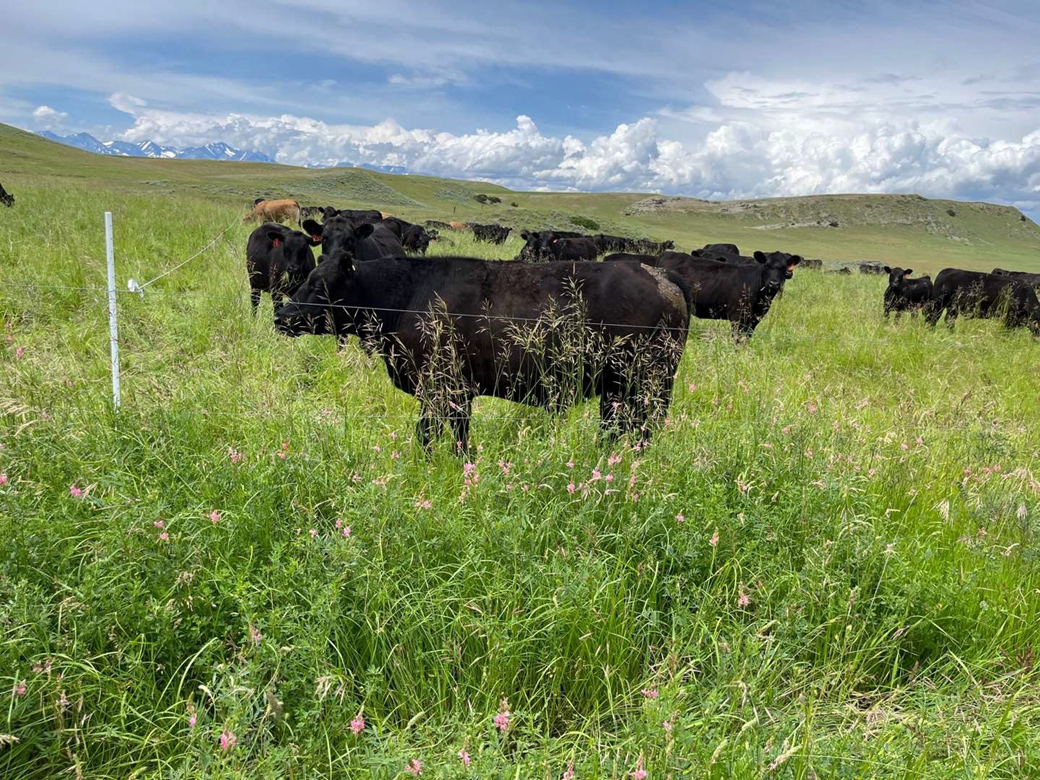
Photo taken on a southern Montana ranch in summer 2023. This ranch adopted more active management approaches in past years, including use of short grazing durations with high stock densities. These practices load nutrients into soils, resulting in more vibrant soil microbial activity. A lengthy regrowth period between grazing events ensures the more desired perennial plants thrive in this setting. Reductions in bare soil, improvements in plant species composition, improvements in soil respiration, improvements carbon-to-nitrogen ratios, and improvements in carbon cycling have all been measured. Trends are upward. The use of temporary fencing allows wildlife to move more freely across the property, since the fences are removed when cattle are not present. By planting polycultures on irrigated fields (versus monocultures), less water is needed for crops, reducing the electricity bill for the sprinklers, and allowing more water in the stream for fish.
SOURCES
Alt, K, Frisina, M., King, F. (1992) Coordinated management of elk and cattle, a perspective – Wall Creek Wildlife Management Area. Rangelands 14(1), 12 – 15.
Barnhart, B. e. (2016, June 15). Agricultural production and nutrient runoff in the Corn Belt: Assessing dynamic environmental performance. Retrieved from US Enviornmental Protection Agency: https://cfpub.epa.gov/si/si_public_record_report.cfm?dirEntryId=321130&Lab=NHEERL
Clonan, A., Roberts, K. E., & Holdsworth, M. (2016, August). Socioeconomic and demographic drivers of red and processed meat consumption: implications for health and environmental sustainability. Retrieved from National Library of Medicine: https://www.ncbi.nlm.nih.gov/pmc/articles/PMC4974628/
Dzomback, B. (2021, April 14). The Nation’s Corn Belt Has Lost a Third of Its Topsoil. Retrieved from Smithsonian Magazine: https://www.smithsonianmag.com/science-nature/scientists-say- nations-corn-belt-has-lost-third-its-topsoil-180977485/
Fulton, J. (2019, January). Water-indexed benefits and impacts of California almonds. Retrieved from Science Direct :https://www.sciencedirect.com/science/article/pii/S1470160X17308592#:~:text=Highlig hts&text=The%20water%20footprint%20of%20one,and%20crop%20choices%20in%20C alifornia.
Fulton, J., Norton, M., & Schilling, F. (2019, January). Water-indexed benefits and impact of California almonds. Retrieved from Science Direct: https://www.sciencedirect.com/science/article/pii/S1470160X17308592#:~:text=Highlig hts&text=The%20water%20footprint%20of%20one,and%20crop%20choices%20in%20C alifornia.
Kimbrough, L. (2022, January 10). The Corn Belt is Losing Topsoil, Increasing Carbon Emissions and Lowering Yields. Retrieved from Civil Eats: https://civileats.com/2022/01/10/the-corn-belt- is-losing-topsoil-increasing-carbon-emissions-and-lowering-yields/
Meijaard, E., Brooks, T. M., Carlson, K. M., Slade, E. M., Garcia-Ulloa, J., Gaveau, D. L., . . . Wich, S. A. (2020, December 7). The environmental impacts of palm oil in context. Retrieved from Nature: https://www.nature.com/articles/s41477-020-00813-w
OECD-FAO Agricultural Outlook 2021 – 2030. (2021). Retrieved from OECDiLibrary: https://www.oecd-ilibrary.org/sites/cf68bf79-en/index.html?itemId=/content/component/cf68bf79-en
Shamart, J., King, F., and Proffit, K. 2012. Effects of a rest-rotation grazing system on wintering elk distributions at Wall Creek, Montana. Journal of Rangeland Ecology and Management. 65: 129 – 136.
USDA. (2021). Agriculture accounted for an estimated 10.6 percent of U.S. greenhouse gas emissions in 2021. Retrieved from USDA: https://www.ers.usda.gov/data-products/chart- gallery/gallery/chart- detail/?chartId=108623#:~:text=Farming%20activities%20in%20the%20United,of%20ch anges%20in%20other%20industries.
Waite, R., Searchinger, T., Ranganathan, J., & Zionts, J. (2022, March 7). 6 Pressing Questions About Beef and Climate Change, Answered. Retrieved from World Resources Institute: https://www.wri.org/insights/6-pressing-questions-about-beef-and-climate-change- answered
IMPORTANT INFORMATION
Copyright© Ranchland Capital Partners, LLC 2024. All rights reserved.
This material is proprietary and may not be reproduced or distributed without Ranchland’s prior written permission. It is delivered on an “as is” basis without warranty or liability. Ranchland accepts no responsibility for any errors, mistakes, or omissions or for any action taken in reliance thereon. All charts, graphs, and other elements contained within are also copyrighted works and may be owned by Ranchland or a party other than Ranchland. By accepting the information, you agree to abide by all applicable copyright and other laws, as well as any additional copyright notices or restrictions contained in the information.
The views and information provided were created at various dates in time and unless otherwise indicated, are subject to frequent changes, updates, revisions, verifications, and amendments, materially or otherwise, without notice, as data or other conditions change. There can be no assurance that terms and trends described herein will continue or that forecasts are accurate. Certain statements contained herein are statements of future expectations or forward-looking statements that are based on Ranchland’s views and assumptions as of the date hereof and involve known and unknown risks and uncertainties that could cause actual results, performance, or events to differ materially and adversely from what has been expressed or implied in such statements. Forward-looking statements may be identified by context or words such as “may, will, should, expects, plans, intends, anticipates, believes, estimates, predicts, potential, or continue” and other similar expressions. Neither Ranchland, its affiliates, nor any of Ranchland’s or its affiliates’ respective advisers, members, directors, officers, partners, agents, representatives, or employees, or any other person, is under any obligation to update or keep current the information contained in this document.
This material is for informational purposes only and is not an offer or a solicitation to subscribe to any fund and does not constitute investment, legal, regulatory, business, tax, financial, accounting, or other advice or a recommendation regarding any securities of Ranchland, of any fund or vehicle managed by Ranchland, or of any other issuer of securities. No representation or warranty, express or implied, is given as to the accuracy, fairness, correctness, or completeness of third-party sourced data or opinions contained herein, and no liability (in negligence or otherwise) is accepted by Ranchland for any loss howsoever arising, directly or indirectly, from any use of this document or its contents, or otherwise arising in connection with the provision of such third-party data.
Featured Articles
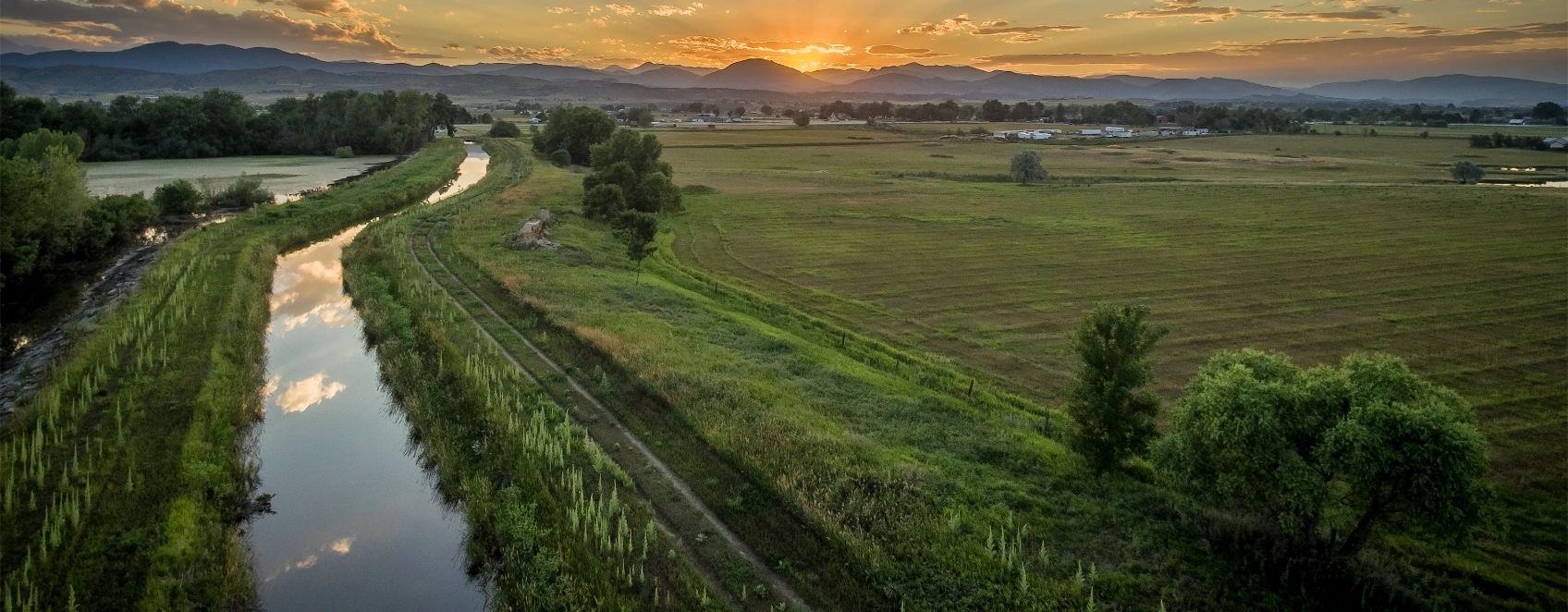
Using Heavy Tail Optimization to Evaluate the 2023 Milliman Study Allocation
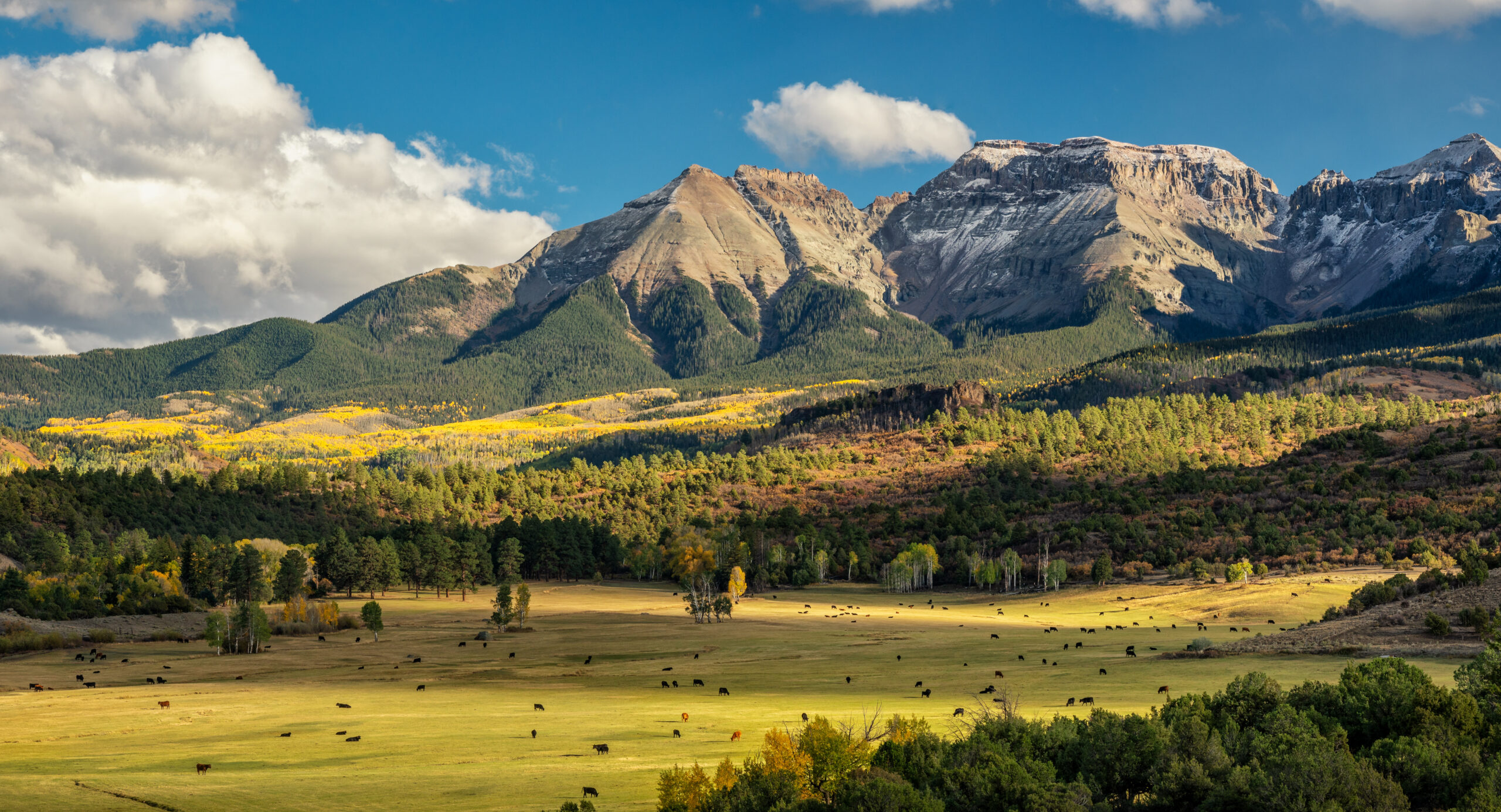
Why Now?

Hunting and Conservation: An Integral Relationship
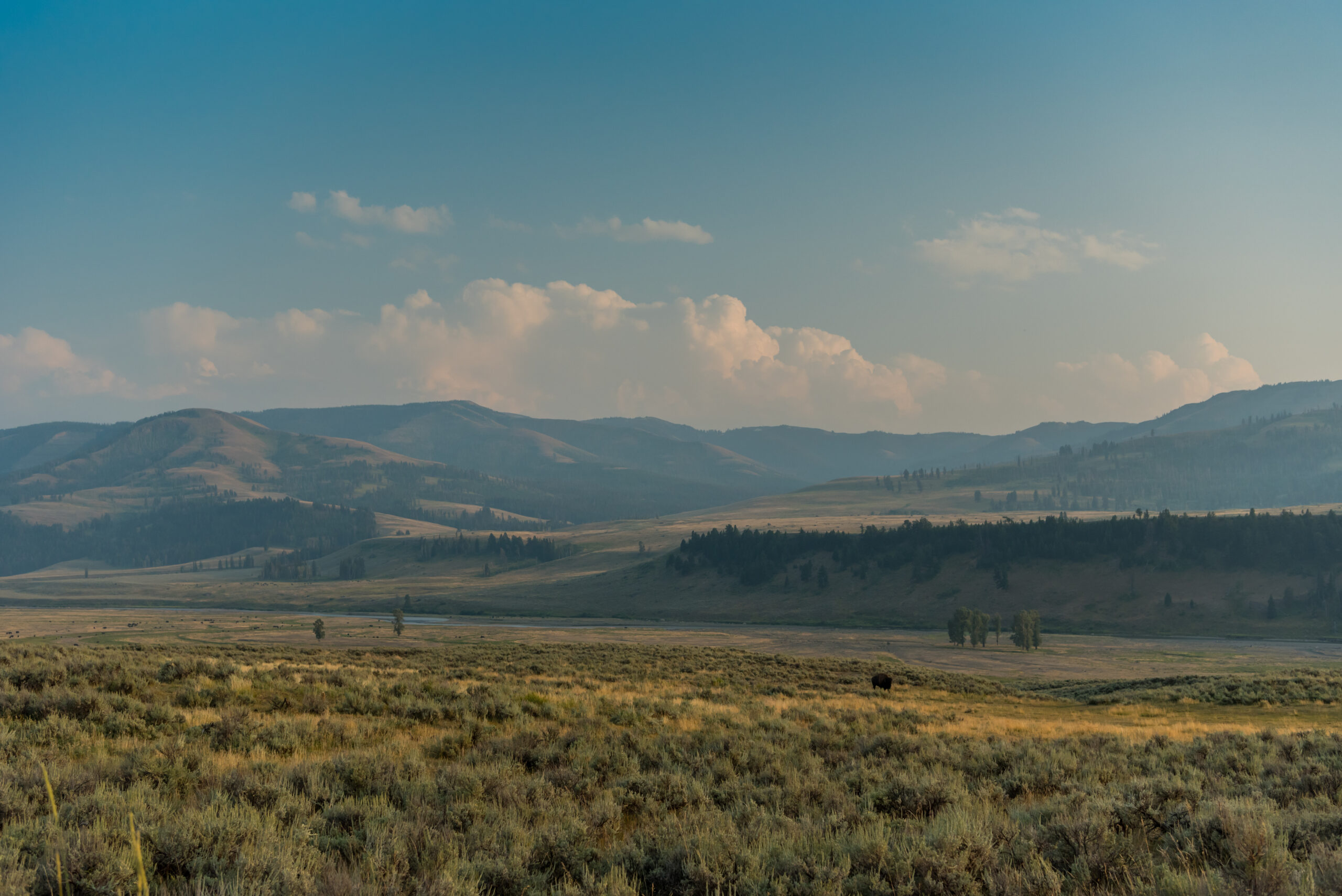
Ranchland Economics under the New Trump Administration: An Initial Look.
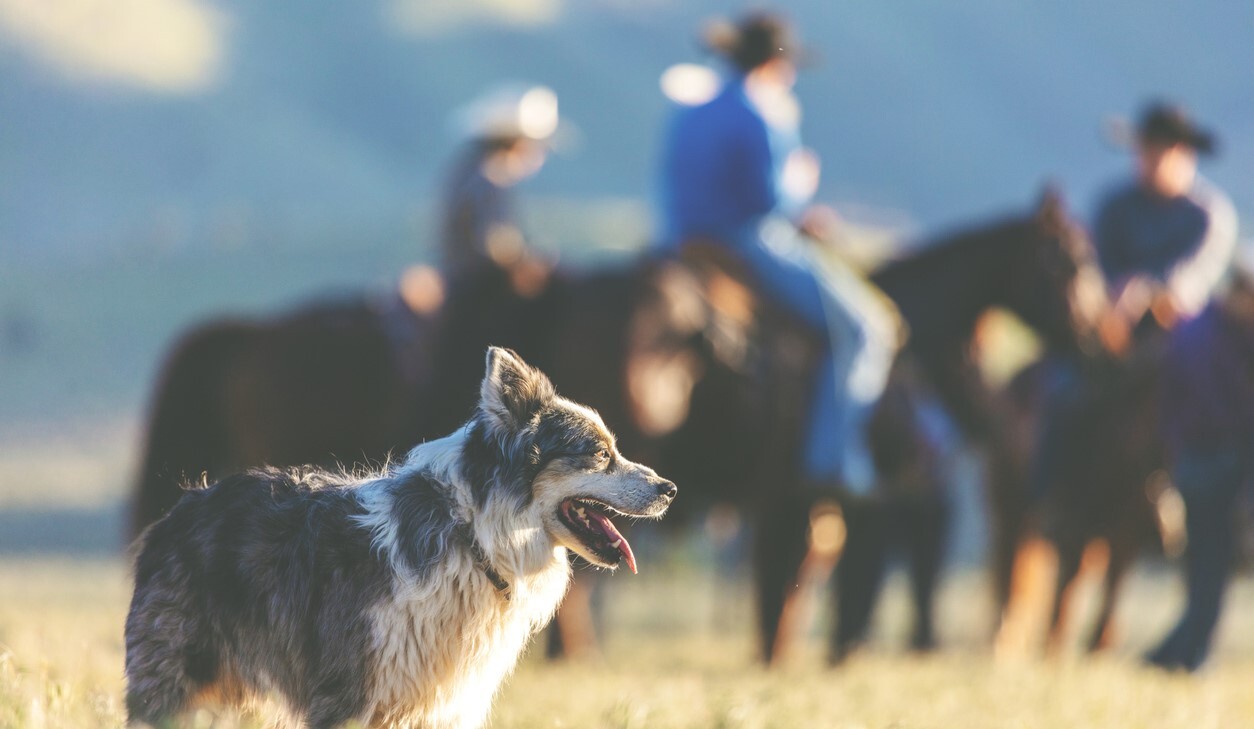
The Changing Landscape of Ranchland Ownership: Understanding the Forces Behind a Generational Land Transfer
